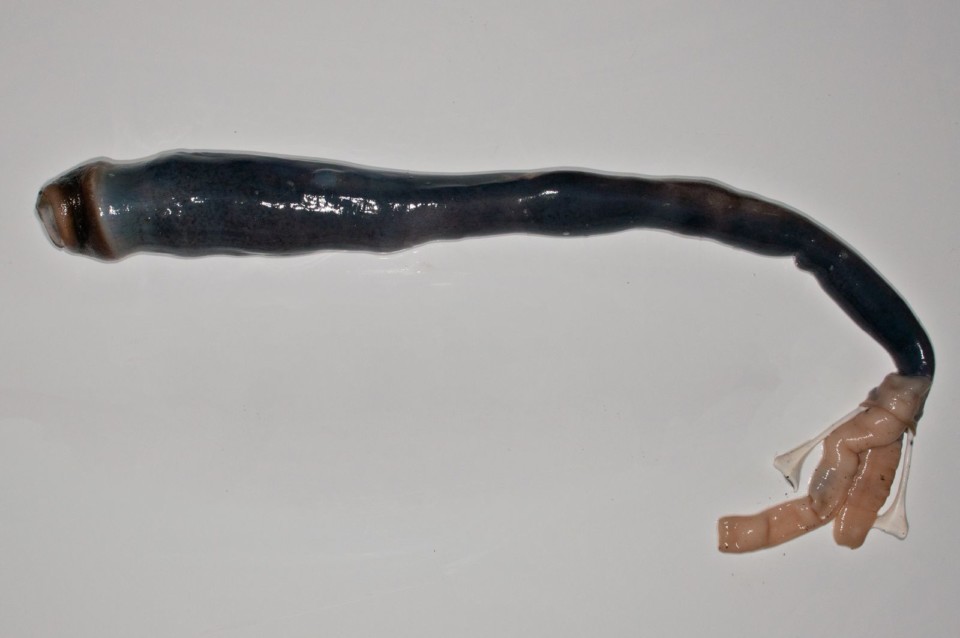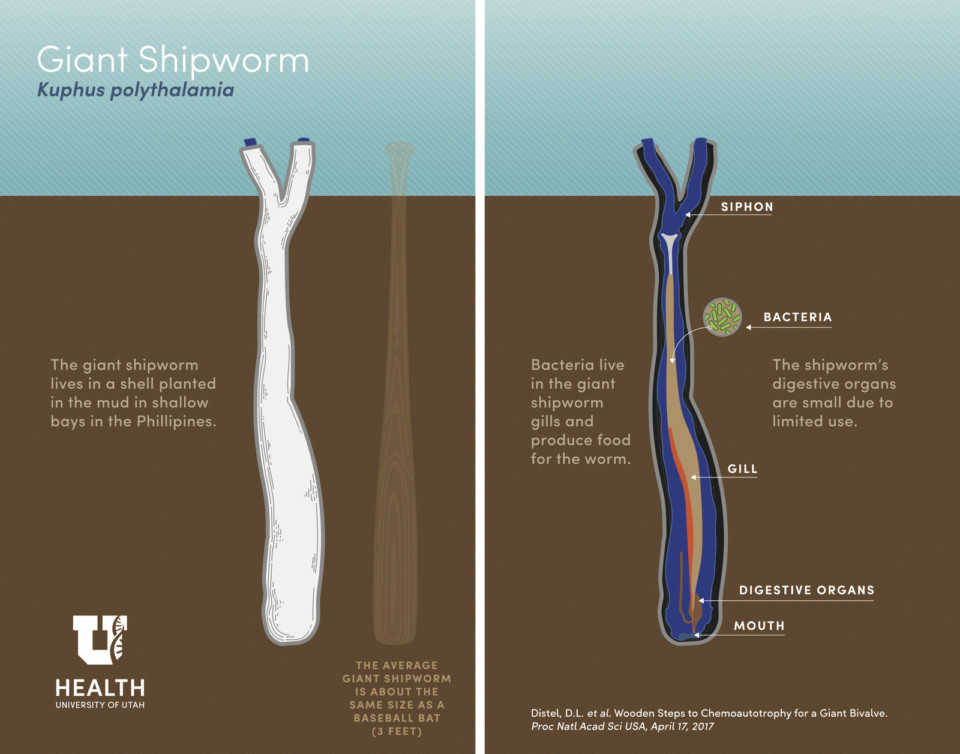
The first living example of a mysterious mollusc, a type of clam, that lives buried in the seabed and eats sulphur has been collected from a lagoon in the Philippines.
The giant shipworm, or Kuphus polythalamia, was previously only known due to findings of their empty shells, which resemble baseball bats.
“It was a very mysterious organism,” Dan Distel of Northeastern University’s marine science centre said.
Although scientists have known the creatures exist for centuries, no living samples had ever been found until a documentary team filmed villagers in Mindanao cooking and eating them.
The footage led international researchers to an unidentified site, which Popular Science magazine described as “Kuphus polythalamia paradise: the stinky lagoon of a long-abandoned log farm.”

Researchers retrieved five specimens from the area and scientists painstakingly chipped them out of their shells to dissect them.
Mr Distel described the shipworm’s “gunmetal-black” colour as “shocking”, because most other bivalves are greyish, tan, pink, brown, light beige. He also described the specimen as “much beefier, more muscular than any other bivalve I had ever seen”.
The New Scientist reported that the giant shipworm was the “world’s longest bivalve and the only known extant species of its genus”.
While other shipworm species usually live in and eat driftwood, the giant shipworm, which is actually a type of clam, lives in noxious mud, from which it somehow derives nutrition.
It is thought the creature relies on symbiotic bacteria in its gills instead of feeding, as the bacteria break down the mud’s hydrogen sulphide, creating a strong smell of rotting eggs.
And if that doesn’t make you feel hungry, then nothing will… unless you fancy some tamilok, or mangrove woodworm!
Follow our Facebook page for daily news updates

Comments are closed.